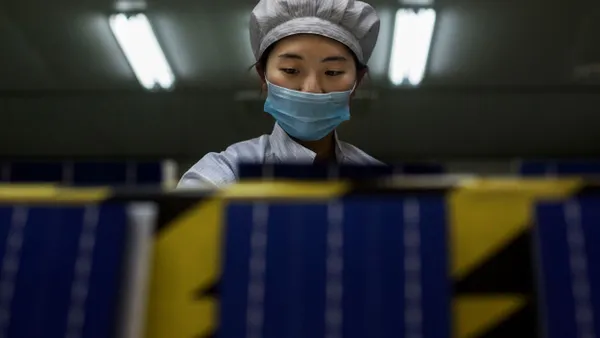The Federal Energy Regulatory Commission was right to dismiss a complaint by Hecate Energy over the New York grid operator’s interconnection rules, the U.S. Court of Appeals for the District of Columbia Circuit said Friday.
The case centers on how detailed a grid operator’s tariff must be, according to the court.
FERC, in September 2021, rejected Hecate’s complaint challenging the New York Independent System Operator’s decision to assign it $10 million in transmission upgrade costs that the renewable energy company said should have been covered by six distributed generating projects.
The interconnection requests for the distributed generation totaling 22.6 MW were submitted to NYISO after Hecate asked to be able to interconnect a 20-MW solar project in Greene County, New York, an area served by Central Hudson Gas & Electric, according to the complaint.
Hecate argued in part that NYISO lacked rules in its tariff allowing the distributed, non-jurisdictional projects to gain “firm” status and effectively move ahead of the company’s project in the interconnection queue. They were included in a base case for the interconnection study for Hecate’s project.
Hecate said its complaint was important because unspecified practices or rules in interconnection procedures will delay and disadvantage the entry of renewable resources to displace older, less efficient non-renewable power plants.
The appeals court supported FERC’s decision, saying NYISO’s tariff gave notice it would include non-jurisdictional projects in its interconnection study to assign upgrade costs.
“Tariffs need not include all practices affecting rates,” the court said. “A tariff need include ‘only those practices that affect rates and service significantly, [and] that are realistically susceptible of specification.’”
The court disagreed with Hecate’s argument that the tariff should have expressly included Central Hudson’s rule for reporting non-jurisdictional projects to FERC.
NYISO’s tariff states that the grid operator would include in its interconnection study changes to existing facilities reported to it by transmission owners like Central Hudson, the court said.
That implies that transmission owners would have a system for reporting changes to NYISO, according to the court. “Central Hudson’s reporting of nonjurisdictional projects would have been ‘generally understood’ from the tariff’s provisions,” it said.
In a footnote for “curious readers” who might wonder how Hecate is pronounced, the court said it’s “‘HEK-a-tee,’ like the Greek goddess of magic, not ‘HEK-ut,’ like the ruler of the witches in Shakespeare’s Macbeth.”
Hecate has 3.6 GW of contracted projects, a roughly 40-GW pipeline of solar and storage projects across the U.S., and about 50 active projects, according to the Chicago-based renewable energy developer.
The company in January closed on a five-year, $550 million credit facility package that will allow it to sell about 5 GW a year, according to Hecate.















